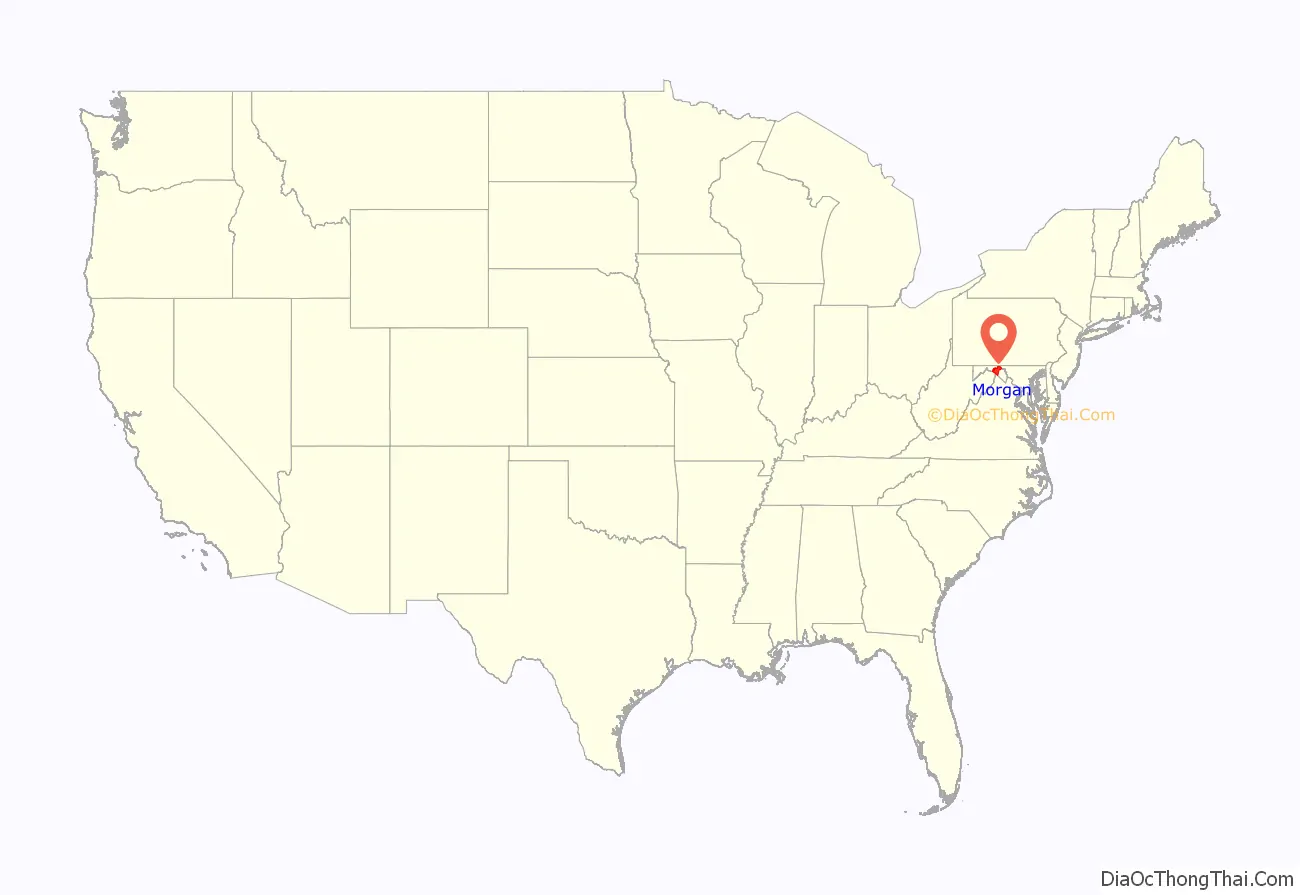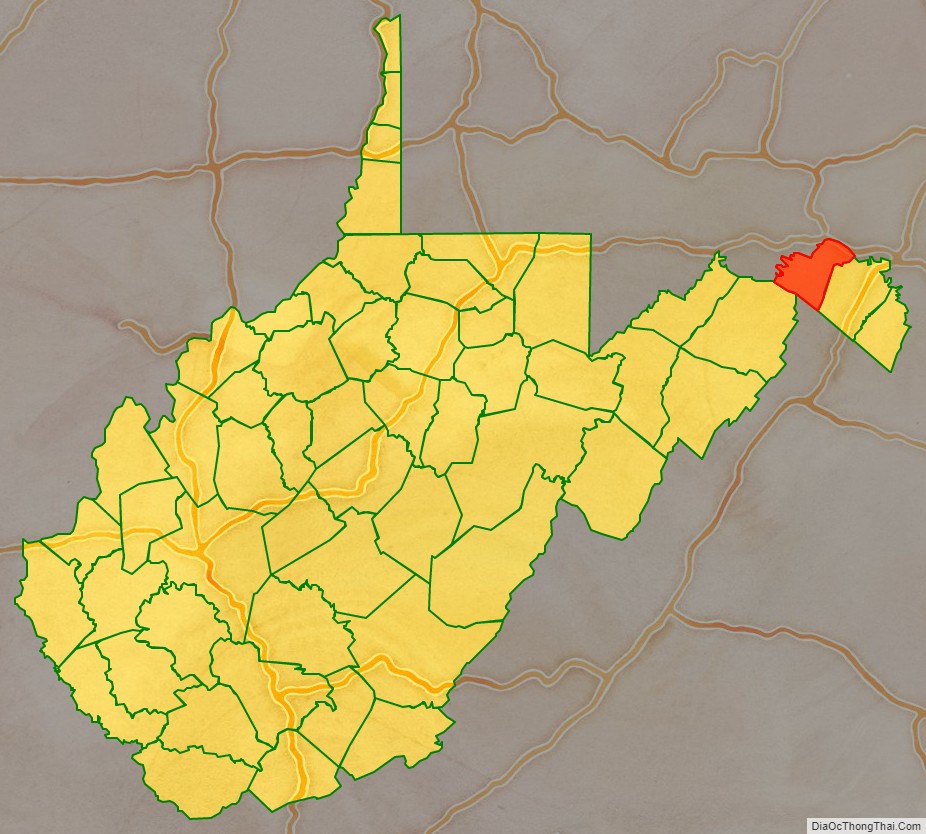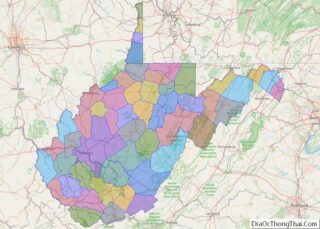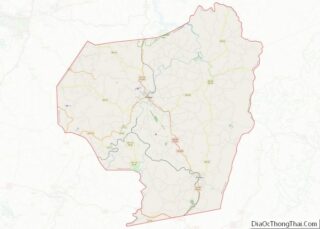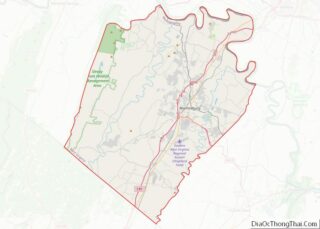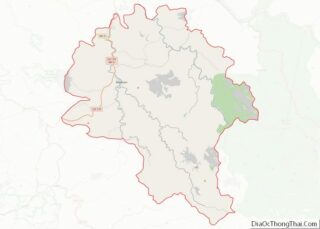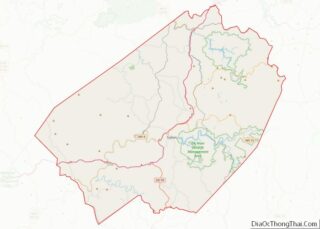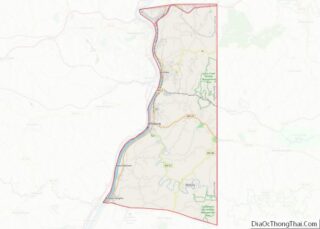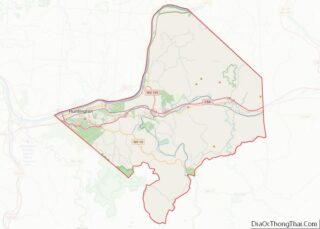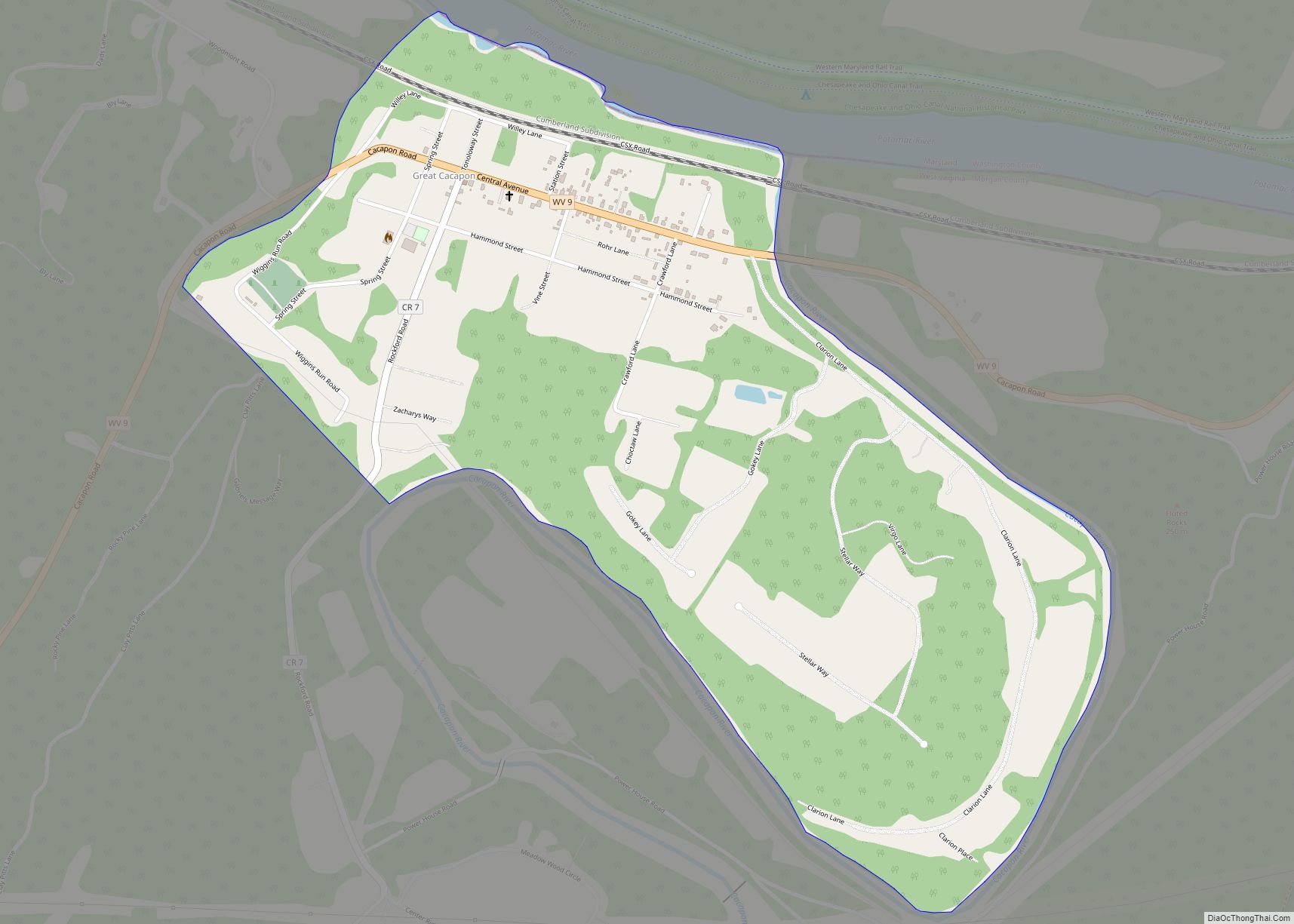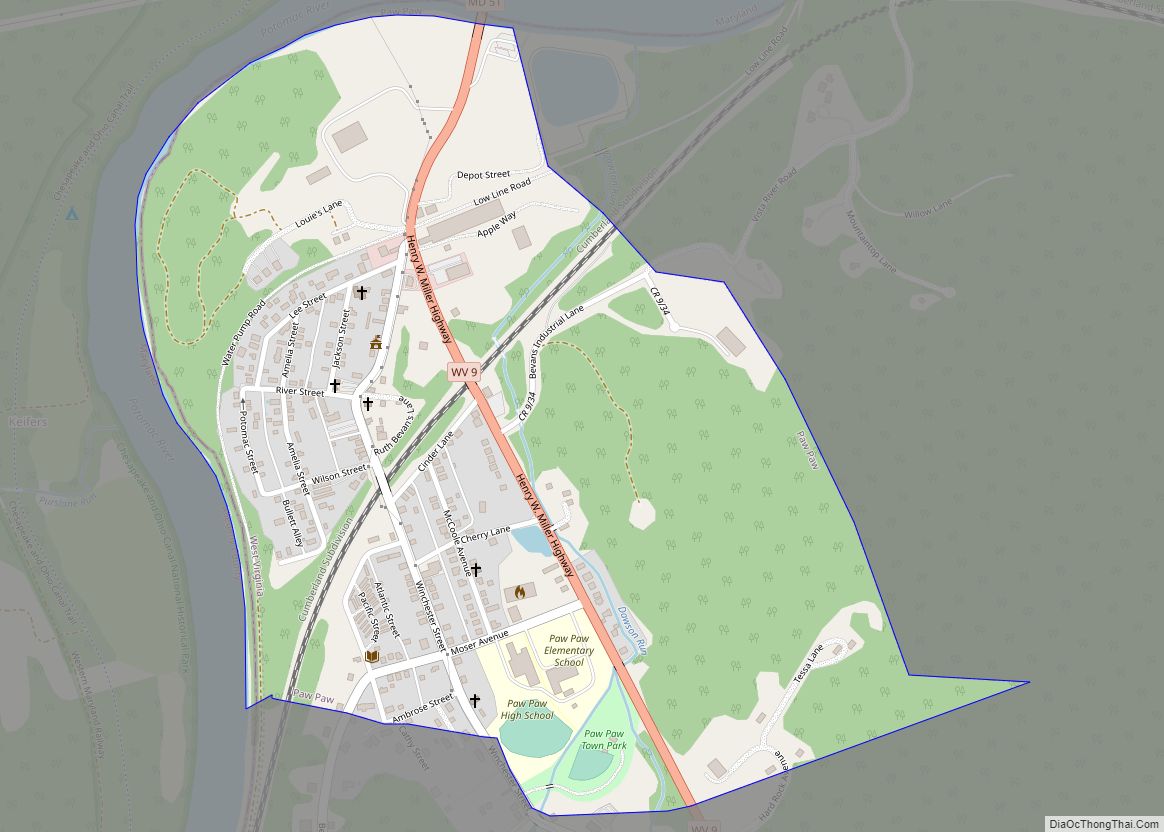Morgan County is a county located in the U.S. state of West Virginia. As of the 2020 census, the population was 17,063. Its county seat is Berkeley Springs. The county was formed in 1820 from parts of Hampshire and Berkeley Counties and named in honor of General Daniel Morgan, prominent soldier of the American Revolutionary War. The county and town of Bath are considered an excellent jumping off point for exploring the Potomac and Cacapon Rivers valleys just to the north and west. Along with also being a tourist destination hosting numerous local artists, mineral water spas, and a large amount of outdoor recreation that includes fishing, boating, wildlife, hunting, and mountain scenery. The region is known for the famed Apple Butter Festival held annually in October. Morgan County is also the home of an important silica mine, part of U.S. Silica.
| Name: | Morgan County |
|---|---|
| FIPS code: | 54-065 |
| State: | West Virginia |
| Founded: | February 9, 1820 |
| Named for: | Daniel Morgan |
| Seat: | Berkeley Springs |
| Largest town: | Berkeley Springs |
| Total Area: | 230 sq mi (600 km²) |
| Land Area: | 229 sq mi (590 km²) |
| Total Population: | 17,063 |
| Population Density: | 74/sq mi (29/km²) |
Morgan County location map. Where is Morgan County?
History
Morgan County was created by an act of the Virginia General Assembly in February 1820 from parts of Berkeley and Hampshire counties. It was named in honor of General Daniel Morgan (1736–1802). He was born in Hunterdon County, New Jersey, and moved to Winchester, Virginia as a youth. He served as a wagoner in Braddock’s Army during the campaign against the Native Americans in 1755. During the campaign, a British Lieutenant became angry with him and hit him with the flat of his sword. Morgan punched the Lieutenant, knocking him unconscious. Morgan was court-martialed for striking a British officer and was sentenced to 500 lashes. Morgan later joked that the drummer who counted out the lashes miscounted and he received only 499 lashes. For the rest of his life he claimed the British still owed him one.
Early European settlers
The first English settlers in present-day Morgan County arrived during the 1730s. Because most of these early pioneers were squatters, there is no record of their names. Historians claim that the first cabin in the county was built around 1745. As word of the county’s warm springs spread eastward, Thomas Fairfax, 6th Lord Fairfax of Cameron decided that the county needed to be surveyed. In 1748, George Washington, then just 16 years old, was part of the survey party that surveyed the Eastern Panhandle region for Lord Fairfax. He later returned to Bath (Berkeley Springs) several times over the next several years with his half-brother, Lawrence, who was ill and hoped that the warm springs might improve his health. The springs, and their rumored medicinal benefits, attracted numerous Native Americans as well as Europeans to the area.
18th century
As mentioned previously, George Washington visited present-day Berkeley Springs several times with his half-brother, Lawrence. When he vacationed in the area in 1767, he noted how busy the town had become. Lord Fairfax had built a summer home there and a “private bath” making the area a popular destination for Virginia’s social elite. As the town continued to grow, the Virginia General Assembly decided to formally recognize it. In October 1776, the town was officially named Bath, in honor of England’s spa city called Bath. The town’s main north–south street was named Washington and the main east–west street was named Fairfax. Also, seven acres (28,000 m) were set aside for “suffering humanity.” When West Virginia gained statehood, that area became West Virginia’s first state park.
Bath’s population increased during and immediately after the American Revolutionary War as wounded soldiers and others came to the area believing that the warm springs had medicinal qualities. Bath gained a reputation as a somewhat wild town where eating, drinking, dancing, and gambling on the daily horse races were the order of the day.
Bath later became known as Berkeley Springs, primarily because the town’s post office took that name (combining Governor Norborne Berkeley’s last name with the warm springs found there) to avoid confusion with another post office, located in southeastern Virginia, which was already called Bath. Because the mail was sent to and from Berkeley Springs, that name slowly took precedence.
19th century
Morgan County was one of fifty Virginia counties that were admitted to the Union as the state of West Virginia on June 20, 1863. Later that year, the counties were divided into civil townships, with the intention of encouraging local government. This proved impractical in the heavily rural state, and in 1872 the townships were converted into magisterial districts. Morgan County was divided into six districts: Allen, Bath, Cacapon, Rock Gap, Sleepy Creek, and Timber Ridge. Except for minor adjustments, the historic magisterial districts remained unchanged until the 1980s, when they were consolidated into three new districts: District 1, District 2, and District 3. A District 4 was created in the 1990s, but subsequently discontinued.
20th century
On April 10, 1919, racial violence broke out when the Morgan County race riot was sparked by local business using African-American strikebreakers against local striking white workers. On the same day of the riots one Hugh Ferguson, a Martinsburg African-American, was accused of criminally assaulting Mrs. Ernest Zimmerman at her home near Brosius, Morgan County (now known as Hancock, West Virginia). An angry mob of several hundred men formed around the jail hoping to lynch Ferguson. Sheriff C. R. Hovermale was forced to flee town with Ferguson.
Morgan County Road Map
Geography
According to the United States Census Bureau, the county has a total area of 230 square miles (600 km), of which 229 square miles (590 km) is land and 0.5 square miles (1.3 km) (0.2%) is water.
Major highways
- U.S. Highway 522
- West Virginia Route 9
Adjacent counties
- Washington County, Maryland (north)
- Berkeley County (east)
- Frederick County, Virginia (southeast)
- Hampshire County (southwest)
- Allegany County, Maryland (northwest)
Rivers and streams
- Potomac River
- Cacapon River
- Cherry Run
- Sir Johns Run
- Sleepy Creek
- Meadow Branch
- Warm Spring Run
